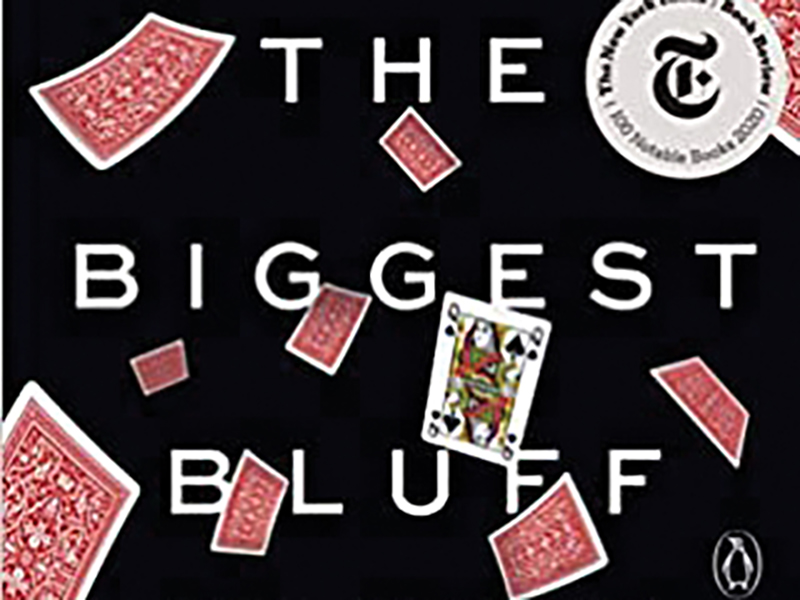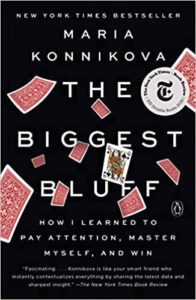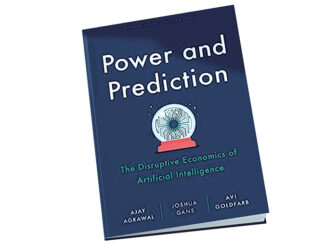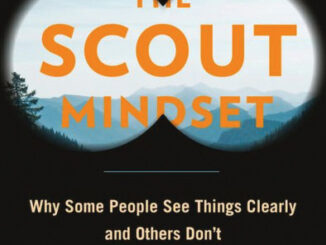Reviewed by Lisa Horwich, Pallas Research Associates, Seattle, Washington, lisa@pallasresearch.com
The Biggest Bluff is Maria Konnikova’s memoir about applying her background in human behavior to the ultimate game of chance and strategy—poker. What starts out as research for a book deal becomes lessons in life for both the author and for us, the readers. This is a book that uses poker as a metaphor for making better decisions, not a “how-to” book about becoming a better poker player.
There are many lessons insights professionals can take away from this well-researched book. Much of what we do centers on understanding decision-making—whether from customers or internal stakeholders.
The author takes us along on her journey to determine where humanity intersects with the skill and luck one finds at the poker table. With the help of experts in poker, mental game coaching, and behavioral analysis, she goes from a complete novice to a contender and victor at high-stakes Texas Hold’em poker in the span of a little over a year. During the course of this journey, she learns a lot about her decision-making abilities and confronts many of the anxieties and fears that have held her back personally and professionally.
Konnikova writes, “Real life is based on making the best decisions you can from information that can never be complete: you never know someone else’s mind, just like you can never know any poker hand but your own.” This resonates with me as a qualitative researcher—my clients never have all the information about their customers. They gather lots of data on purchasing behavior, mathematically rank characteristics that drive preference, and try to find the optimal price for their product through statistical modeling. But, learning about human behavior through conversations—whether in person or virtually—fills in that bit of missing information and gets us closer to learning what is going on in those customers’ minds.
Throughout The Biggest Bluff, the author shares the many lessons she learns about poker (and herself) that the reader can apply to their personal and professional lives—the following are just a few of them.
Konnikova discovers that poker isn’t about winning, it’s about losing. “If you win right away… you’ll have absolutely no way to gauge if you’re really just that brilliant or if it was a total fluke and you got incredibly lucky.”
She also discovers that her lack of aggression during her first poker tournament corresponds to society’s biases against assertive women. She begins to understand how the Gambler’s fallacy* affects her playing. Because we think all probabilities should be normally distributed, and they’re not in poker (or any other games where luck comes into play—although it is in statistics), we continue to bet because we think we are “due” for a run of good fortune. In this novice stage, Konnikova has to learn that any modicum of success is highly dependent on other people and chance.
The experience helps her learn not to dwell on her failures, but to focus on the process and to retreat from being a victim—even if the cards don’t go her way. Learning to control the decisions she chooses to act upon, rather than on the cards being dealt, helps her avoid letting the past weigh her down. She also finds that understanding other players’ decision-making motivations helps her stop internalizing their actions, thereby increasing her own self-worth.
Konnikova uses behavior analysis to help identify the “tells” she is guilty of showing when she plays. She learns to streamline her playing, making her not only harder to “read,” but also rationalizing her own thought process. She also spends time learning about the importance of reading other people correctly, but she falls short of profiling the most important person—herself—leading to a disastrous debut at the World Series of Poker (WSOP) main event she had been training for the past year.
While she doesn’t have the immediate fairy-tale success, Konnikova does come to realize that her journey is “about knowing how to optimize and reclaim power over what you can do while minimizing the perils of happenstance that you can do little about.”
*Gambler’s fallacy refers to the erroneous thinking that a certain event is more or less likely, given a previous series of events.





